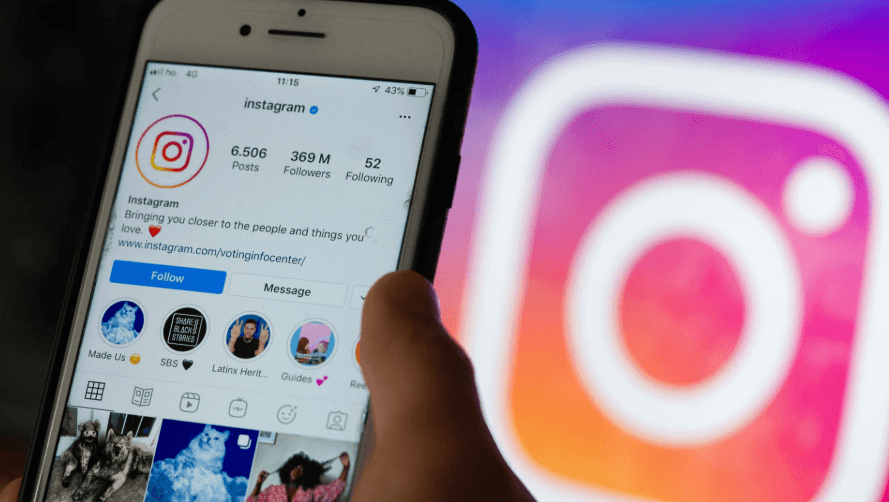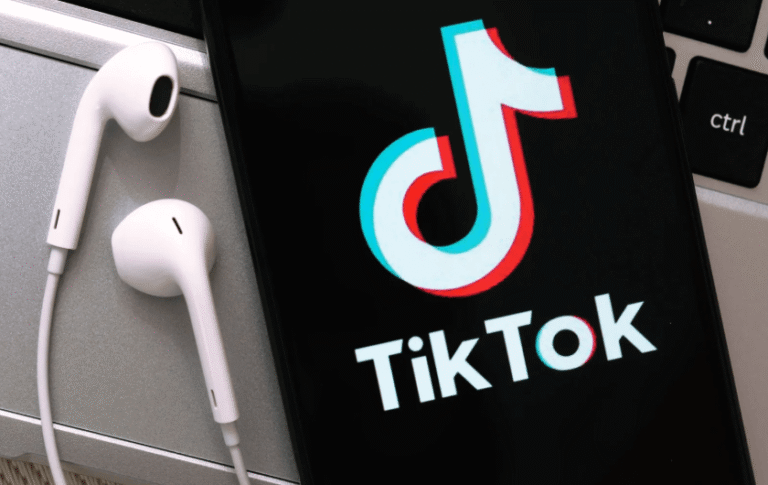The Evolution of Instagram: How the Platform Has Changed and What It Means for Marketers

Instagram, since its launch in 2010, has undergone a series of transformations that have reshaped not just the platform itself, but also how businesses and marketers approach social media strategy. From a simple photo-sharing app to a highly sophisticated platform incorporating video, commerce, and AI-driven features, Instagram’s evolution reflects broader trends in the digital world and the demands of both users and brands.
This article explores the journey of Instagram, highlighting key changes in its features, algorithms, and business tools, and discusses what these changes mean for marketers. By understanding Instagram’s evolution, marketers can develop more effective strategies to reach their target audience and stay ahead of the curve in 2025.
1. Introduction: The Rise of Instagram
Instagram’s rise from a simple photo-sharing app to one of the most influential social media platforms of the 21st century has been nothing short of revolutionary. With over 2 billion active users as of 2025, Instagram has become a vital tool for businesses, influencers, and marketers worldwide. Its ability to evolve with changing user behavior and technological advancements has cemented its place in digital marketing strategies.
2. Instagram’s Early Days: A Simple Photo App
2.1 The Launch of Instagram: A Visual Revolution
Instagram was launched in 2010 by Kevin Systrom and Mike Krieger, offering a simple platform for users to share photos with friends and followers. With its emphasis on visual content, Instagram provided an outlet for creativity, giving people a platform to showcase their lives through images. Its early success was due to the sleek design, easy-to-use filters, and mobile-first experience.
2.2 Early Features and User Experience
In its early years, Instagram was all about photos. Users could take pictures, apply filters, and share them with their followers. The app became a favorite among younger audiences who wanted to showcase their lives in a visually appealing way. The lack of distractions and the focus on high-quality visuals set it apart from other social networks like Facebook and Twitter.
3. Instagram’s Acquisition by Facebook: A Turning Point
3.1 New Resources and Capabilities
In 2012, Facebook acquired Instagram for $1 billion. This acquisition marked a turning point in Instagram’s evolution, giving the platform access to Facebook’s vast resources. The purchase enabled Instagram to grow rapidly and innovate at a scale that was previously unattainable.
3.2 Introduction of Ads on Instagram
Instagram introduced its first ad formats in 2013, allowing businesses to run paid campaigns on the platform. This move turned Instagram from a purely social platform into a powerful marketing tool. The integration of Facebook’s ad system allowed advertisers to target Instagram users based on their interests, behaviors, and demographics.
4. The Introduction of Stories: A Game-Changer
4.1 Why Stories Became So Popular
In 2016, Instagram introduced Stories, a feature inspired by Snapchat. Stories allowed users to post images and videos that disappeared after 24 hours. This new format was perfect for more casual, authentic content that wasn’t meant to live forever on a profile. It quickly gained popularity due to its ease of use and sense of urgency.
4.2 How Stories Impacted Marketing Strategies
For marketers, Stories offered a unique opportunity to engage with followers in a more interactive and temporary way. Brands began to use Stories for product launches, behind-the-scenes content, and limited-time offers, all of which helped to drive engagement and sales.
5. The Rise of Instagram Shopping: The Platform Becomes a Marketplace
5.1 Instagram Shopping: A Seamless Experience
Instagram Shopping, launched in 2018, was a game-changer for e-commerce. This feature allowed users to shop directly from the platform by tapping on products featured in posts, stories, or ads. The seamless integration of shopping features made Instagram a one-stop-shop for browsing and purchasing products.
5.2 How Marketers Leveraged Shopping Features
E-commerce brands quickly adopted Instagram Shopping, creating shoppable posts and stories to drive conversions. The ability to link directly to product pages made Instagram a powerful tool for sales, allowing businesses to reach customers at the moment of inspiration.
6. Algorithm Changes: Shaping the Future of Content Discovery
6.1 Understanding Instagram’s Evolving Algorithm
Over the years, Instagram has made several changes to its algorithm. Initially, posts appeared in a reverse-chronological order, but in 2016, Instagram switched to an algorithmic feed. This shift prioritized posts that users were most likely to engage with, based on their past behavior, rather than showing them posts in the order they were posted.
6.2 The Shift Toward Personalized Content
Instagram’s focus on personalization has been a key aspect of its evolution. With AI and machine learning, the platform now tailors content to individual users, enhancing their overall experience and keeping them engaged. For marketers, this shift means that creating high-quality, relevant content is more important than ever to stand out.
7. Video Content and IGTV: The Shift Toward Moving Pictures
7.1 The Importance of Video in 2025
As video content became more popular, Instagram responded by enhancing its video features. In 2018, it introduced IGTV, allowing users to upload long-form video content. Today, video is one of the most powerful formats on Instagram, with Reels—Instagram’s short-form video feature—being a major driver of engagement.
7.2 IGTV and Reels: New Opportunities for Marketers
IGTV and Reels provide brands with new opportunities to engage with their audience in a more dynamic way. Video allows for storytelling, product demonstrations, and interactive experiences, making it one of the most effective formats for building brand awareness and driving sales.
8. Influencer Marketing: Instagram’s Influence on Brand Partnerships
8.1 The Evolution of Influencer Marketing
Instagram has been the birthplace of influencer marketing, where individuals with large followings promote brands to their audience. The platform’s visual nature, along with its ability to foster community engagement, has made it a perfect space for influencers to thrive.
8.2 How Instagram Helps Brands Connect with Influencers
With its built-in tools like direct messaging, sponsored posts, and branded content, Instagram makes it easier for brands to connect with influencers. Marketers can collaborate with influencers to create authentic content that resonates with their target audience.
9. The Emergence of AI and Augmented Reality on Instagram
9.1 AI-Powered Features for Personalization
Instagram’s integration of AI technologies has allowed for more personalized user experiences. Features like Instagram’s Explore page use AI to recommend posts, accounts, and ads that users are likely to enjoy, based on their behavior and interactions on the platform.
9.2 AR Filters and the Future of Marketing
Augmented reality (AR) has become a significant part of Instagram’s appeal. AR filters allow users to transform their photos and videos in creative ways. For marketers, AR offers new opportunities for interactive advertising and virtual try-ons, especially in industries like fashion and beauty.
10. Instagram’s Shift Toward a Creator Economy
10.1 Instagram’s Role in the Creator Ecosystem
With the rise of creators—individuals who generate revenue through their content—Instagram has shifted toward supporting the creator economy. The platform offers monetization features such as paid partnerships, affiliate marketing, and fan subscriptions, allowing creators to generate income directly from their following.
10.2 The Importance of Monetization Tools for Creators and Brands
Brands can collaborate with creators to develop more authentic, effective marketing campaigns. The growing trend of creators as entrepreneurs provides opportunities for brands to form deeper, more engaging partnerships with their audiences.
11. User Engagement: How Instagram is Fostering Communities
11.1 Community Building Features: Hashtags and Groups
Hashtags, IG Live, and other community-building tools have helped foster deeper connections among Instagram users. By creating specific hashtag campaigns or leveraging Instagram groups, brands can cultivate engaged communities around their products or services.
11.2 Enhancing Interaction with Users
Instagram’s interactive features, like polls, quizzes, and Q&A sessions, allow brands to engage with users in a more meaningful way. These features provide a way for marketers to gather insights, conduct market research, and foster two-way conversations with their followers.
12. Privacy and Data Security: Instagram’s Response to Growing Concerns
12.1 Data Privacy Regulations and Instagram’s Approach
As privacy concerns continue to grow, Instagram has adapted by complying with new data privacy regulations, including the GDPR in Europe. The platform is committed to giving users control over their data, allowing them to manage privacy settings and choose what they share.
12.2 How Marketers Can Adapt to New Policies
Marketers must stay up-to-date with Instagram’s privacy policies to ensure they comply with legal requirements. Understanding data privacy regulations is crucial for developing effective, transparent marketing strategies that respect users’ privacy.
13. The Future of Instagram: Trends to Watch in 2025
13.1 AI-Driven Personalization
As AI continues to evolve, Instagram’s content discovery features will become even more personalized. Marketers will need to leverage data-driven insights to create content that resonates with specific audience segments.
13.2 The Continued Growth of E-commerce
Instagram will likely continue to focus on e-commerce features, allowing users to make purchases directly through the platform. As Instagram becomes a primary shopping destination, marketers will need to optimize their strategies for social commerce.
14. What Does Instagram’s Evolution Mean for Marketers?
14.1 The Importance of Adaptability in Marketing
Instagram’s evolution demonstrates the importance of staying adaptable in the fast-changing world of digital marketing. Marketers must constantly evolve their strategies to keep up with new features and trends on the platform.
14.2 Embracing New Tools and Features for Success
To succeed on Instagram in 2025, marketers must embrace new tools, such as AI-driven personalization and e-commerce features, to stay relevant and engage with their audience effectively.
15. FAQs
- How has Instagram’s algorithm changed over time?
- Instagram’s algorithm has shifted from a chronological feed to a more personalized, AI-driven system that prioritizes content based on user interests and interactions.
- What are Instagram Stories and how do they impact marketing?
- Instagram Stories are short-lived posts that disappear after 24 hours. They offer brands a more authentic way to engage with followers and promote limited-time offers or behind-the-scenes content.
- What is Instagram Shopping?
- Instagram Shopping allows businesses to tag products in posts, stories, and ads, enabling users to purchase directly from the platform.
- How can marketers use Instagram for influencer marketing?
- Marketers can collaborate with influencers on Instagram to create authentic content and promote products to a wider, targeted audience.
- What role does AI play in Instagram’s future?
- AI will continue to shape Instagram by personalizing content for users, enhancing the platform’s ability to recommend posts and ads based on individual preferences.
- What are the privacy concerns on Instagram?
- Instagram has implemented various privacy features in response to growing concerns over user data security, ensuring compliance with global regulations like GDPR.
16. Conclusion: Embracing the Change and Moving Forward
Instagram’s evolution over the years has been driven by its ability to adapt to the needs of its users and the demands of businesses. As the platform continues to grow and change, marketers must stay informed about new features and trends to ensure they are making the most of Instagram’s tools. By embracing these changes and staying ahead of the curve, businesses can continue to thrive on Instagram in 2025 and beyond.



